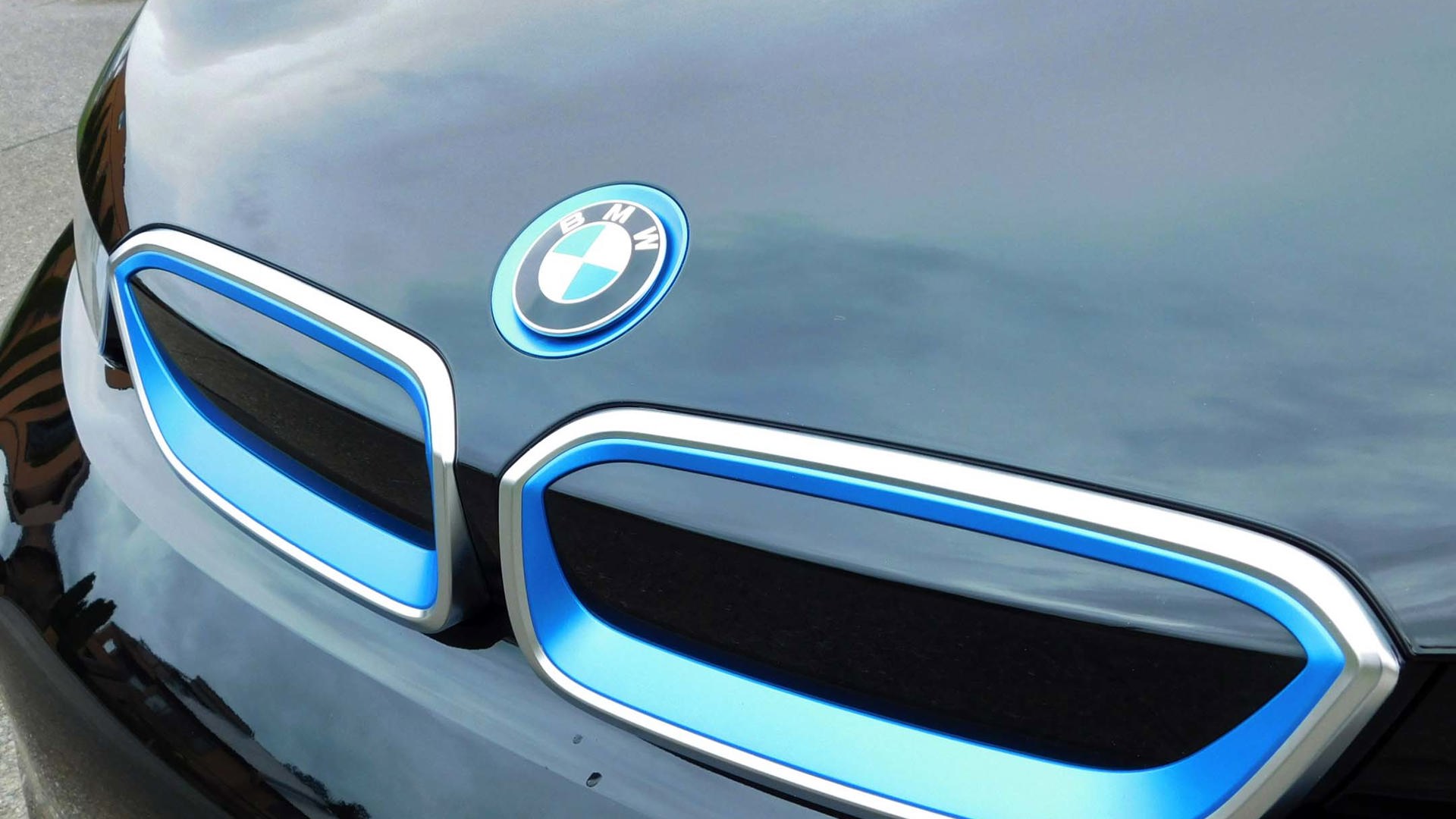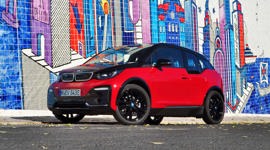 AutoTrader SCORE
AutoTrader SCORE
-
STYLING5/10
-
Safety8/10
-
PRACTICALITY7/10
-
USER-FRIENDLINESS7/10
-
FEATURES8/10
-
POWER9/10
-
COMFORT8/10
-
DRIVING FEEL9/10
-
FUEL ECONOMY10/10
-
VALUE6/10
Introduced to Canada for the 2014 model year, the unique-looking BMW i3 electric runabout is visually and mechanically unchanged for 2017, with the same pug-nosed collection of peculiar but eminently practical curves, the same modern eco-lounge interior, and the same 170 hp (130 kW) electric motor driving the rear wheels.
The only reason I ran out of charge at all is because I was determined to hear the range extender engine running
This isn’t to say that there’s nothing exciting or new for the 2017 BMW i3: For one thing, North American models are now available, at last, with a sunroof (it’s a one-piece sliding glass unit, but it features a lateral bar down the middle – presumably to aid structural rigidity – giving it a T-top look from inside the car). There are also some changes to the lineup of available colours, with Arravani Grey and Solar Orange dropped from the lineup, while Fluid Black and Protonic Blue debut.
In true electric-car fashion, however, the most exciting news is all about range. For 2017, the i3 gets a new, higher density and more efficient lithium-ion motive battery, providing 33 kilowatt-hours (kWh) of power reserves (versus the previous 22 kWh), and giving an estimated 183 km of electrically powered range from a full charge for the electric-only i3 (previously 130 km).
For cars equipped with the optional Range Extender gas-powered charging engine, as my test car was, you get a little less all-electric range at about 156 km (due to additional weight of the gas engine and fuel), but with nine litres of premium fuel in a full tank, you get enough backup charging capacity to travel a further 134 km, giving the 2017 i3 REx a total range of around 290 km. In terms of efficiency, the i3 REx is officially rated at an energy consumption of 18.9 kWh/100km (more on that later), and in REx mode it burns gasoline at an officially rated 6.5 / 7.0 L/100km (city/highway).
As a city dweller who doesn’t commute (I work from a home office) and who mostly drives short distances, I found that in practice I didn’t get as much range as estimated. But the new battery provides enough electric range that I was able to drive around for most of the week – even including a long-ish 50 km mixed city and highway round trip – without ever worrying about charging.
In fact, the only reason I ran out of charge at all is because I was determined to hear the range extender engine running, so I studiously avoided the free charging stations dotted around Vancouver. When I did plug in for a short period while shopping (a 40-minute stop for groceries and some hardware) it netted me an additional 23 km of range – the joys of reasonably fast 240 volt Level 2 charging stations. Given Vancouver’s fairly extensive charging infrastructure, if I’d plugged in at every opportunity, I could probably have driven around indefinitely without ever charging at home or paying for a charge.
Well, I’d perhaps have to pay for the occasional cappuccino and parking fee while I waited for my free charge to complete.
Of course, free charges won’t likely last for long once electric cars become more popular, and not every city or suburb has charging infrastructure like Vancouver’s. But unless your commute is more than about 50 km each way, then even without the Range Extender, the i3 now has plenty of juice to get you to and from work on a daily basis with a healthy safety margin, plugging in at home to recharge overnight.
With my actual energy consumption averaging just under 20 kWh per 100 km (it was cold, so I was running the cabin heater and seat heaters), and electricity in Vancouver costing 12.4 cents/kWh once past the low-usage threshold, if I was paying for electricity it would work out to $2.48/100 km – certainly a lot cheaper than my recent test drive in a (reasonably fuel-efficient) Nissan Versa Note, which at an actual average of 8.0 L/100 km and a fuel cost of $1.37/L, worked out to $10.96/100 km.
If you live further out in the suburbs or in a rural area where the charging infrastructure is truly sparse, BMW’s Range Extender package, as fitted to my test car, offers an extra measure of security and peace of mind. With a two-cylinder, 650cc scooter engine (from BMW’s C650 maxi-scooter) that delivers 38 horsepower to keep a minimum charge in the motive battery, the i3’s Range Extender isn’t quite as robust a backup system as the Chevrolet Volt’s gasoline engine (it’s not designed to climb mountain passes such as BC’s Coquihalla Highway with a depleted motive battery), but it’s also much less obtrusive. The whole package hides under the luggage compartment floor, weighs just under 125 kg (275 lb), and can hardly be heard when it comes on at normal road speeds.
When stopped at traffic lights you hear the Range Extender engine as a distant mutter, as if somebody nearby was running a generator (which in fact is what the range extender is). My uncalibrated smartphone sound meter measured library-like sound levels of 39 db in the i3 when stopped in electric mode, versus a still quiet office-like sound level of 49 dB with the range extender engine running. In terms of the driving experience nothing changes at all, since all the engine does is charge the motive battery.
Looking at the i3, you might think the driving experience would be the worst kind of green-car disengagement, with slow acceleration and tippy handling, but you’d be wrong. With 170 hp and 184 lb-ft of instant-on torque propelling the i3’s flyweight 1,467 kg (3,234 lb) carbon fibre-intensive body, it fairly rockets from a standstill to 60 km/h, and gets to 100 km/h in 7.9 seconds (the lighter non-REx car is a bit quicker at 7.2 seconds 0–100 km/h).
The only genuinely peculiar green trait is the strong regenerative braking, which kicks in to charge the battery as soon as you lift off the throttle. It takes a little getting used to, especially judging when and how far to lift off the throttle in order to stop where you want. But once you get the hang of it, you can drive around town pretty much with one pedal.
Because most of the car’s weight is way down low, the tall-looking body doesn’t translate into tippy handling. Instead, thanks to the i3’s rear-wheel drive layout and typically well-sorted BMW suspension, you get quick steering and impressively agile handling, with surprising grip from the tall, skinny tires. In fact if I had to level any criticism at the i3’s ride and handling it would be that the ride is a touch on the stiff side (it can get a little choppy over bumps) and that the quick steering can make the car a bit nervous-feeling on the highway.
Inside, the i3 offers an eclectic mix of materials and surfaces that telegraph its green intent with a sort of European eco-lounge flavour (BMW calls its trim levels Loft, Lodge and Suite). I found the front seats to be properly comfortable, and the car’s upright stance and wide expanse of glass offers excellent outward visibility, with the exception of the somewhat bulky A-pillars. I loved the test car’s eucalyptus matte wood trim, and appreciated the intent of the conspicuously green (and lightweight) hemp-fibre interior panels, even if I didn’t outright love them (my wife, on the other hand, did love them).
The back seat offers genuine space for two adults (at 5'11" I could comfortably sit “behind myself”), accessed via slightly fiddly reverse-opening rear half-doors, which can’t be opened without opening the larger front doors. The smallish but usable 260 L luggage compartment proved adequate for a week’s worth of groceries for three.
As would be expected of a BMW, there’s plenty of available tech, all of which is controlled in familiar BMW fashion, with a big high-resolution display screen and a console-mounted controller. The only ergonomic oddity is the shifter, which is a twist-to-operate affair mounted on a stubby arm protruding from the steering column. It has an unusual shift pattern and a slightly awkward to reach push-for-park button (the start button is mounted next to it in a similarly awkward position).
It took a couple days for me to acclimatize to the setup, but once you realize it’s really “push forward for forward, pull back for reverse” then everything begins to feel more natural.
Available features – all of which were fitted to my test car – include a rear-view camera with parking guidance, park distance control, park assist, satellite radio, adaptive cruise control with stop-and-go, pedestrian approach control with city braking, impressive-sounding Harman Kardon audio system, Internet connectivity, concierge and remote services (you can pre-program the car to have the climate control make things comfortable shortly before you get into the car), and a navigation system that, among other things, highlights available charge stations. Front heated seats are standard and plenty powerful, reducing the need to use energy heating the cabin. All in all, it’s a comfortable, nicely equipped and easy-to-live-with package.
What may not be so easy to live with is the value proposition. Depending on how exactly you define the electric car segment, the i3 is certainly competitive, but it’s by no means the least expensive option. The base price for an REx-equipped i3 is $52,000, versus $38,590 for a 2017 Chevrolet Volt. The pure electric i3 starts at $47,500, versus $42,895 for a similarly sized pure-electric Chevrolet Bolt (which offers a 383 km range) or $32,698 for a 2017 Nissan Leaf (all of these prices are before provincial green car incentives, which range from $5,000 in BC to $14,000 in Ontario).
What none of these i3 competitors offer, of course, is the BMW brand cachet. In that regard, the true competition might be more reasonably considered to be the Tesla Model S (starting at $92,500) or upcoming (and more similarly priced to the i3) Tesla Model 3. And here, compared to the Model 3, the BMW i3 has a undeniable advantage: it’s already available, complete with quirky looks, fun driving dynamics and an efficient green electric powertrain.
| Engine Displacement | 130 kW electric / 650cc range extender |
|---|---|
| Engine Cylinders | N/A / 2 |
| Peak Horsepower | 170 hp |
| Peak Torque | 184 lb-ft |
| Fuel Economy | battery-only 2.1 Le/100 km, 18.9 kWh/100 km; range extender 6.5/7.0/6.7 L/100 km |
| Cargo Space | 260 L/1,100 L rear seats down |
| Model Tested | 2017 BMW i3 with Range Extender |
| Base Price | $52,000 |
| A/C Tax | $100 |
| Destination Fee | $2,145 |
| Price as Tested | $64,590 |
|
Optional Equipment
$10,345 – Premium Package $3,000; Technology Package $2,750; Interior Design Selection $850; i Lodge with Carum Leather $350; 20-inch wheels $1,300; Sunroof $1,200; Metallic paint $895
|
|













































